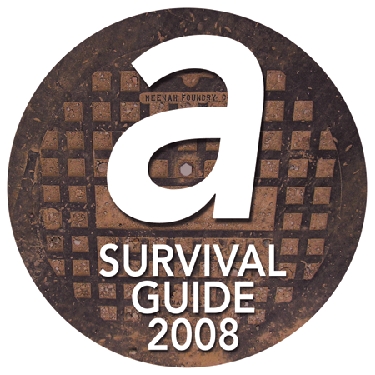You are Legend. Central is deserted. Abandoned cars clog the street. Rusty bicycles rest in racks with locks that will never again open. There’s no need for the locks anymore. There’s no one to steal anything. You are alone.No longer can you get fresh veggies at La Montañita Co-op, Sunflower Market, Whole Foods or Smith’s. They’re all dark. There are no farmers to till the fields, no one to harvest crops, no one to drive the produce to market. The kids with the dreads and tats at the registers are dust.You don’t know how, but you must become a total locavore. You have no other options. So you’d better start learning about purslane.Before the apocalypse, you probably sprayed purslane with Roundup every summer, not knowing you were poisoning a superfood growing without invitation or assistance in your backyard. Now you need to know how to identify this plant, which has more omega-3 fatty acids than any other leafy vegetable on the planet. This disrespected ground cover can also provide you edible seeds high in protein and leaves and stems rich in vitamins B and C, calcium, carotenoids, minerals, and antioxidants. Purslane has been known to Hispanic farmers for centuries as verdolago . To horticulturists, it’s Portulaca oleracea . But for most of the past century, America has been trying to wipe it out. The state of Arizona even classifies it as a noxious weed. Yet purslane was Gandhi’s favorite food. Native Americans harvested the seeds. It was treasured by ancient Greeks. Modern Greeks still have great recipes for this succulent herb (try it with roasted beets, fresh mint leaves, goat cheese, olive oil and red vinegar). Purslane grows everywhere in New Mexico except high elevations. Insects don’t attack it. It’s invulnerable to plant diseases. You’ll find it thriving in the poorest of soils.Writes Steve Brill, author of Stalking the Wild Dandelion , “Purslane is one of my favorite summer vegetables, with a mild sweet-sour flavor and a chewy texture. Its reddish stem, nearly as thick as a computer cable, creeps along the ground, rarely getting taller than a pint of milk. The stalkless leaves are paddle-shaped, about as long as a paper clip.”Other writers describe its flavor as “nutty” or “like spinach or chard with earthy, mineral notes.” I think the young leaves taste like tart cucumber.Purslane is a self-germinating hermaphrodite (try to get your mind around that). It’s tenacious and ingenious. When it is uprooted, it uses the liquid in its broken stem to rapidly produce seeds from which a new plant will sprout in the same spot.Purslane is a survivor, like you, dear Legend.Michael Pollan, author of In Defense of Food : An Eater’s Manifesto , declares purslane one of the two most nutritious plants in the entire world. The other is lamb’s quarters, which also spreads like a weed in New Mexico. That leafy plant is loaded with vitamins A, C, B6 and K and is a good source of minerals, calcium and protein. Yet our culture values nutrition-empty iceberg lettuce more than these superfoods.Pollan points out that purslane and lamb’s quarters have much higher levels of phytochemicals than their domesticated cousins. Why? “Because these plants,” Pollan writes, “have to defend themselves against pests and disease without any help from us.” Iceberg lettuce tastes sweet because these natural chemical defenses have been bred out of it. In exchange for a mass-market flavor adjustment, farmers must expend more money and labor for water, insecticides, herbicides, fungicides and fertilizer to produce a head of iceberg lettuce than a far more nutritious handful of purslane or lamb’s quarters. So why aren’t governments sowing purslane and other wild plants in the chronic famine belts where soils are depleted and there’s no money for chemicals to battle bugs and plant diseases? The cynical answer is there is no profit to be made from a plant that doesn’t need anything from agribusiness. A less depressing answer may be that we have simply forgotten the value of wild plants as MBAs in suites 80 stories in the sky have replaced the farmer with dirt under his fingers. But, dear Legend, in the lonely world where you live, Monsanto, General Mills and Trader Joe’s are gone. It’s just you, the antelope grazing in meadows where Coronado Mall’s parking lot used to be, the cougars sunning themselves on Tingley Beach, the elk rutting on UNM’s North Golf Course and purslane for dinner.
The opinions expressed are solely those of the author. E-mail jims@alibi.com.





